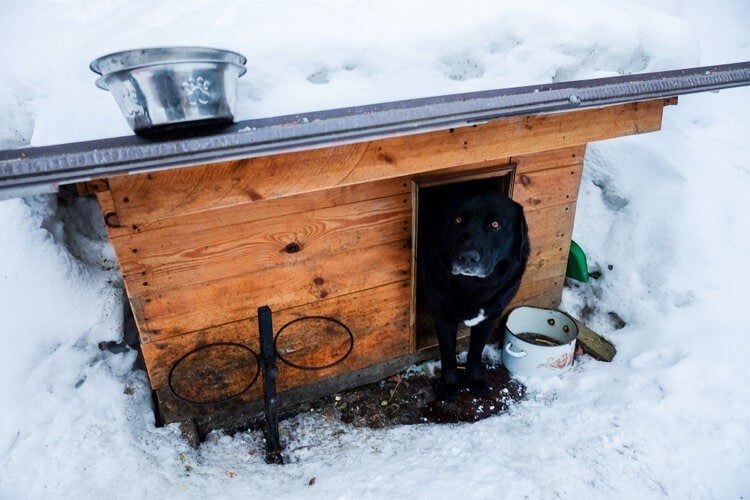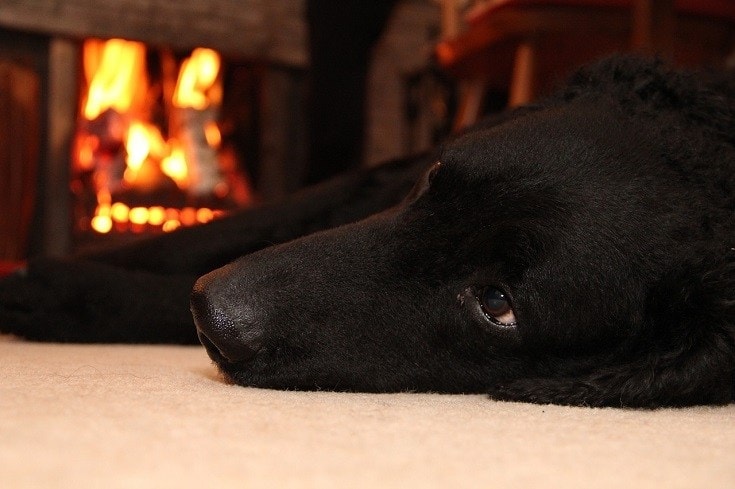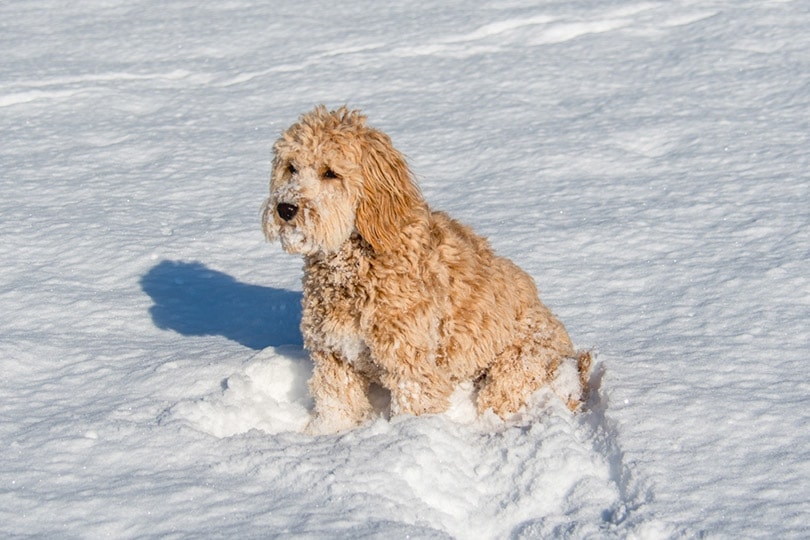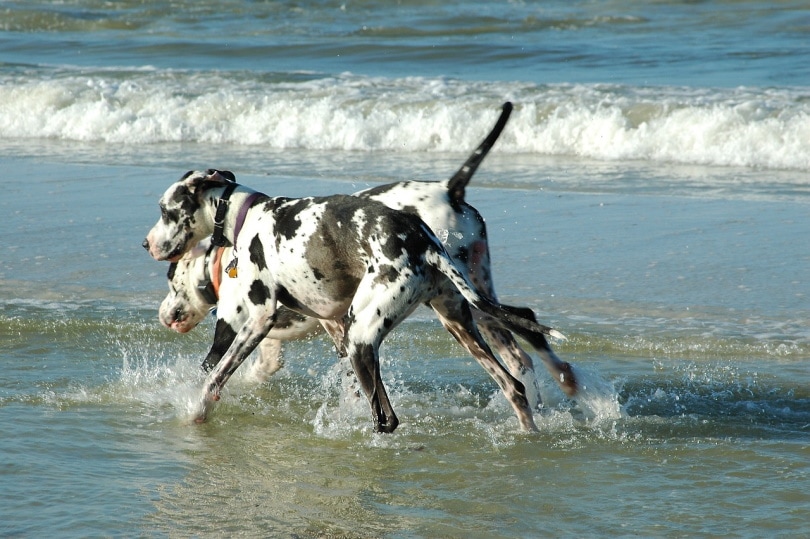How To Heat a Dog House – 10 Vet Approved Tips & Advice

By Misty Layne
Updated on

Click to Skip Ahead
If you have a dog that spends time outside in a dog house, you need to be sure that the house is cool in the summer and warm in the winter. Keeping a dog house cool in the summer isn’t too difficult, but how are you supposed to heat a dog house? There are actually several ways you can heat your dog’s home!
Most likely, you’ll need to use a combination of the strategies below to ensure your dog is comfortable and cozy when it’s cold out. But the ways to heat a dog house in this article are fairly straightforward, so it shouldn’t be much trouble. Keep reading to learn how to heat your dog’s home this winter!
How to Know if You Need to Heat Your Dog’s House
Before you do anything to your dog house, you need to know if you actually need to heat it up. Some canines do perfectly fine with a regular, non-heated home, and some may not enjoy having a home that’s heated. It depends on what breed of dog you have, their build, and the climate you live in.
In Arctic regions such as Svalbaard, the sledding dogs are so well adapted to the freezing temperatures, and their kennels are so well insulated, that they will often stay outside their kennels in temperatures as low as 5oF because it’s too warm for them inside! How crazy is that?
Breed
The breed of your dog will tell you a lot about whether they need a heated home. If your pup has been bred to endure the coldest of temperatures, like a Malamute or Husky, they may be perfectly fine in a non-heated dog house during most winters. But if your outside dog is a breed that doesn’t have a lot of hair or is on the small side, they’re more at risk of getting too cold and would need a heated dog house.

Age
Consider the age of your dog. No matter the breed, older dogs can develop joint issues, arthritis, or other health problems exacerbated by extreme cold. So, senior dogs may be better off with a heated dog house, even if they are a breed designed for cold weather.
Climate
Think about what the climate is like where you live. Someone living in Alabama probably wouldn’t need a heated dog house because the winters tend to be mild (although they would need one that stands up to lots of rain!). Or they may only need a dog house to be heated a couple of nights of the year. But someone living in New Jersey would be more likely to need a heated dog house for their pet due to the extreme cold and snow they get. When the temperature drops below 45°F, it’s time to break out the heat.
Also, factor in wind chill. A cold, windless night is one thing, but if it’s freezing out and there’s lots of wind whipping around, it means it’s colder than the ambient temperature. This is when insulation and doggie doors come in handy!

What Your Dog Is Used To
Even a thick coated Husky might need some extra heating if they are used to a warmer climate, so if you have moved from a balmy southern state to the frigid north, it will take time for your dog to adjust, so don’t assume that their fluffy coat will be enough.
The 10 Ways to Heat a Dog House
1. Heated Dog Bed
Getting your dog a heated dog bed won’t necessarily heat the entire dog house, but it will keep your pup warm and cozy whenever they’re lying on it. Heated beds are excellent for use in a dog house, especially this one, as it’s not only heated, but also soft and comfortable.
We like this heated bed by K&H because it heats up to your dog’s body temperature, has two thermostats, and has a cord wrapped in steel, so your pup cannot chew on it. It’s also energy efficient, so you won’t have to worry about your electric bill getting too high!
2. Heated Kennel Mat
A heated kennel mat is similar to a heated bed but is thinner and works more like a heating pad you would use for yourself. Despite being a bit thinner than a regular dog bed, this one is still cozy for your pup.
Many heated mats are for indoor use only, but K&H do it again with an orthopedic foam mat wrapped in water-resistant PVC that stands up to outdoor elements and dries quickly. Like their bed, this one comes with a steel-wrapped cord, making it much safer for your dog.
3. Heater
- Our Pick: Hound Heater
Of course, using a heater is one of the best ways to keep your dog’s entire house warm when it’s cold out. If you’re concerned about safety when it comes to heaters, getting a heater created for dog houses (instead of one you’d use in your own home) is key since these are designed for safety.
The Hound Heater has a cord that is chew-proof and rounded corners, so there are no sharp edges for your pup to cut themselves on. It also uses dry heat and only runs when absolutely needed, so it won’t be running constantly or overheating. There’s also a thermostat, so you can easily set it for the temperature you want to maintain in your pet’s home. Best of all, it’s a breeze to install!
4. Microwavable Heat Pad
K&H have really cornered the market on dog house heating! If you don’t have a readily accessible outdoor electrical socket, this may be the perfect option for you. These microwavable heat pads can hold their heat for up to 12 hours, without the need for cords or wires.
Obviously, they are much smaller in size, so you may want to spring for two or three if your dog is on the larger size. If you are looking for a sturdier option, these SnuggleSafe Microwave Discs are another good option, but they don’t tend to hold their heat for quite as long.
5. Insulated and Heated Pre-Made Dog House
- Our Pick: Dog Palace Insulated Heated Dog House
Of course, the easiest way to ensure your dog’s house is heated when it’s cold is to go all out and buy them an insulated and heated dog house. It might be a bit more expensive, but you’ll save money in the long run since you won’t need to add anything to it to heat it.
This heated dog house by Dog Palace has a central heater with a thermostat and insulation in the floor, roof, and sides to ensure your pet is kept cozy and warm. The floor is also raised to help keep it off the ground, and features a drainage system in case your pup has any accidents. Plus, it already comes with a doggie door, so the heat inside won’t dissipate.
6. Doggie Door
- Our Pick: Petmate Barnhome III Door
If your dog’s house has nothing but an open hole in the wall for them to go in and out from, then the house will be cold during the winter, no matter what else you do. Installing a simple doggie door in the form of vinyl flaps on the opening will go far in helping trap heat inside when it’s chilly out.
This door flap is easy to install and keeps out cold air, rain, and snow. It will also be simple for your dog to go through when they want to leave or enter their home!
7. Raised Dog House
- Our Pick: TRIXIE Natura Classic Dog House
A dog house sitting on the cold ground will have trouble staying warm. Instead, get your pup a raised dog house so the bottom of the house isn’t against the ground, and when it’s cold out, stuff hay or straw beneath it to insulate. Not only will this kind of dog house help your pet stay warmer during the winter, but it will also help them stay cooler in the summer as air can circulate under the home.
The TRIXIE dog house is not only raised but weatherproofed inside and out, so it should last a long time. It’s also draft-resistant, which will help. We’d suggest adding a flap to the door, though, as it’s open.
8. Insulation
Adding insulation is another way to warm up the interior of your dog house. You could do this with fiberglass insulation in the walls or by caulking up any holes or gaps you find in the house. But to make things easier on yourself, you might want to go with an insulation kit designed for a dog house.
This kit by Precision Pets is foam insulation that can easily be inserted into your pet’s house and removed as needed. It’s also washable, so it’s simple to keep clean! You will have to temporarily remove the roof of your dog’s home, though, to get it in.
HOT TIP: If your budget is feeling extra tight, cardboard is a super cheap insulating material. Placing a sheet under the kennel and attaching some around the outside creates a gap between the cold air and ground, and the kennel. Be aware, the cardboard would need to be clean and dry daily.
9. Windows
If your dog’s house has no windows, adding a few will help warm up the interior. They won’t make the home warm enough all on their own, but letting more light in will help add a few degrees to the inside.
These domed acrylic windows are most often used on fences, but they can be used on dog houses, as well. They seem to be relatively easy to install, and besides making your dog’s house a bit less chilly, your pup will have a blast being able to look outside and see the world! Just make sure they’re sealed up tight; you don’t want to create a draft!
10. Paint Your Dog House
This is another thing that won’t magically make your dog’s house toasty warm but this weatherproof paint by Ronseal will help with heating. Anything dark will soak in more heat when it’s sunny, so it makes sense to paint your dog’s house a darker color so it stays a bit warmer during the winter. It doesn’t have to be black; you can choose from plenty of darker colors, like navy or even dark green. Painting your pet’s house with a dark color and adding a doggie door or windows will help immensely when the weather turns cold.
Look for paint that is designed to repel water and moisture, to reduce the effects of damp creeping in, or if you want to go one further, you can paint your dog house using a thermal paint additive!
Conclusion
You can help heat a dog house in many ways when the weather turns cold. The simplest way to heat a dog house is to buy one already heated and insulated. If you don’t want to fork out that much capital for a dog house (as it can be pricey), you can do plenty of other things to heat one. Whether adding insulation on your own, installing a heater for your pet, or getting your dog a heated bed or mat, you can keep your pet warm enough when it’s outside during the winter!
Featured Image Credit:























